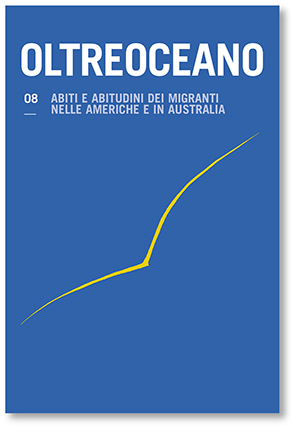Tejidos que hablan
Keywords:
símbolo, huipiles, escrituraAbstract
El artículo explica los significados contenidos en los símbolos que pueblan los huipiles. Es una forma de escritura: las mujeres mayas visten con unas telas que hablan del pasado precolombino, del presente y de la esperanza, con el simbolismo de la tela, también un buen futuro.
Speaking Clothes
The article analyzes the symbolic meaning of huipiles, a form of writing: thus, Maya women wear clothes that talk through the texture symbolism, about the Precolumbian past, dreams for the present, as well as a positive future.
Tessuti che parlano
L’articolo spiega i significati contenuti nei simboli che popolano huipiles. Si tratta di una forma di scrittura: le donne maya vestono con alcuni tessuti che parlano, del passato precolombiano, del presente e si augurano, con la simbologia del tessuto, anche un buon futuro.
Downloads
References
Anónimo (2010): Popol Vuh. S. Colop (Ed.). Guatemala: F&G.
Asociación de escritores mayances de Guatemala (2005): Conozcamos algo más de nuestros vestiarios. Y el sistema de numeración maya. Chatwalijoq, 4, 5, pp. 1-30.
Cirlot, J.-E. (1982): Diccionario de símbolos. Barcelona: Labor.
Eliade, M. (1972): Tratado de historia de las religiones. México: ERA.
García, P. (2007): B’ixonik tzij kech juk’ulaj kaminaqib, Canto palabra de una pareja de muertos Guatemala: F & G.
Chacón de Willemsen, T. (2011): Hilos mayas de Guatemala: el lenguaje de los símbolos. Guatemala: PROTEJE.
Knoke de Arathon, B. (2005): Símbolos que se siembran. Guatemala: Museo Ixchel del Traje Indígena.
Knoke de Arathon, B. (2009). Atuendos indígenas de la Guatemala prehispánica y colonial. Galería, 12, 36, pp. 23-27.
Oxlaj Cúmez, M.Á. (2009): Ru taqikil ri Sarima’ La misión del Sarima. Guatemala: F&G.
Downloads
Published
How to Cite
Issue
Section
License

This work is licensed under a Creative Commons Attribution-NonCommercial-ShareAlike 4.0 International License.
The authors undertake to comply with the following conditions, which are considered accepted at the time of submission of their contributions.
The sending of a text implies that it is unpublished and not submitted to be published elsewhere.
1. If accepted, the author shall confer on the publisher the right to publish and distribute it both in paper form and in the online electronic edition. The published articles will be downloadable and made available in open access.
2. Provided that it correctly indicates that the first publication took place in the journal Oltreoceano. Rivista sulle migrazioni the author has the right to: a) reproduce the article in separate extracts or collected in a volume; b) publish the article on their personal website or teaching site provided that these sites are of a non-commercial nature; c) deposit the article in online archives of a non-commercial nature, linked to the institution they belong to or as part of projects for the non-commercial dissemination and open access of scientific works.
The use of contributions by third parties, for commercial or otherwise unauthorized purposes, is not allowed. The publisher declines all responsibility for the unauthorized use of the material published in the journal.












